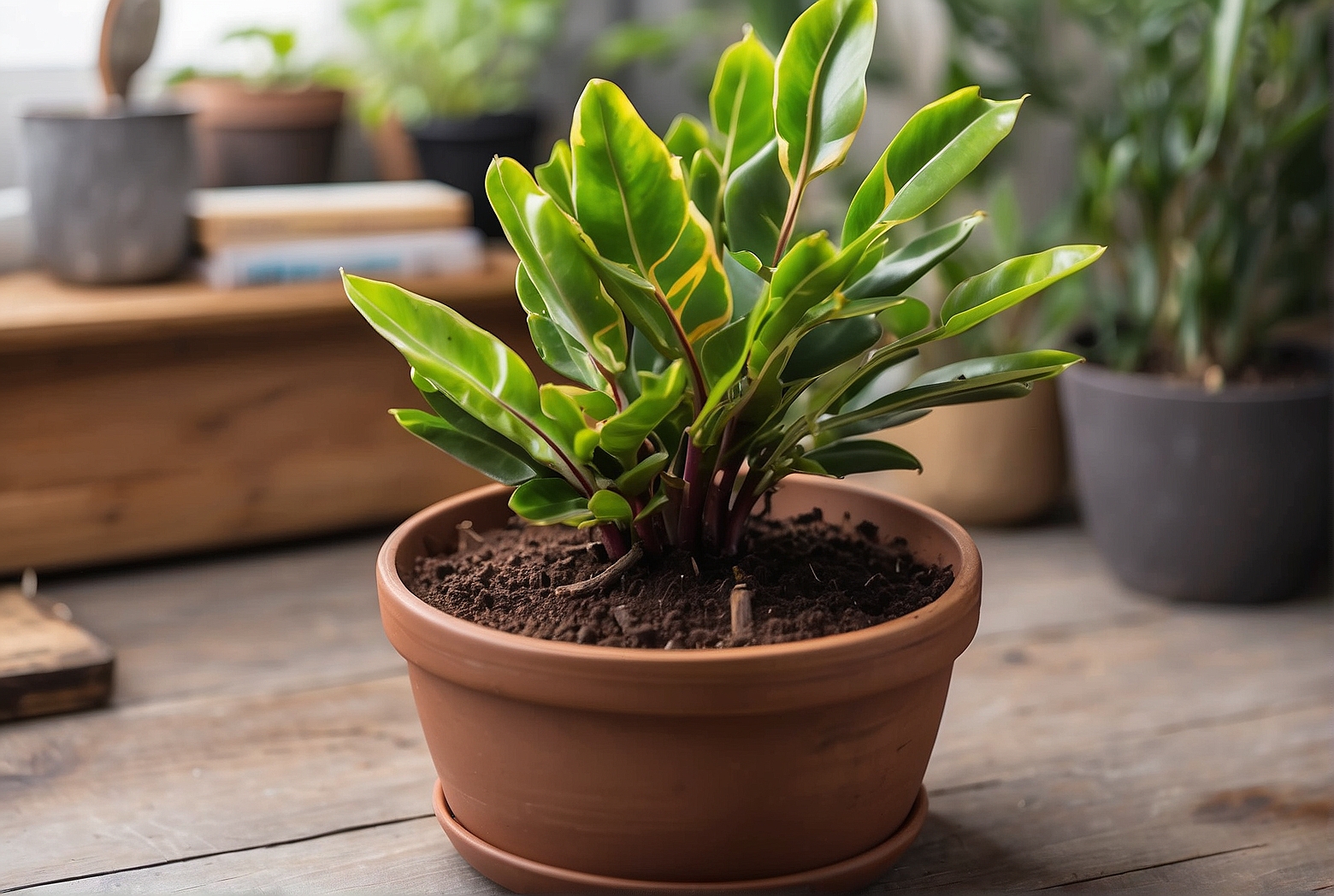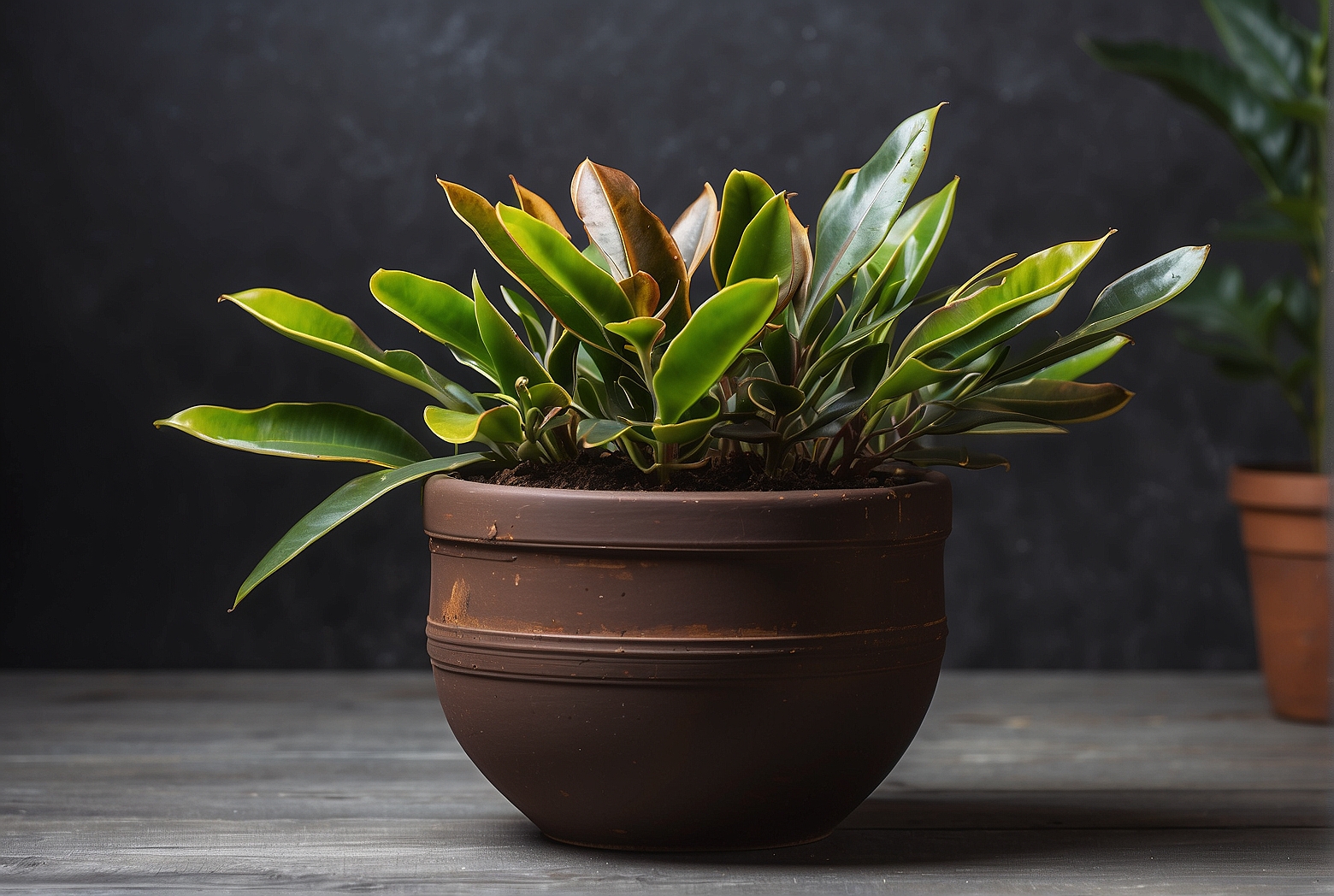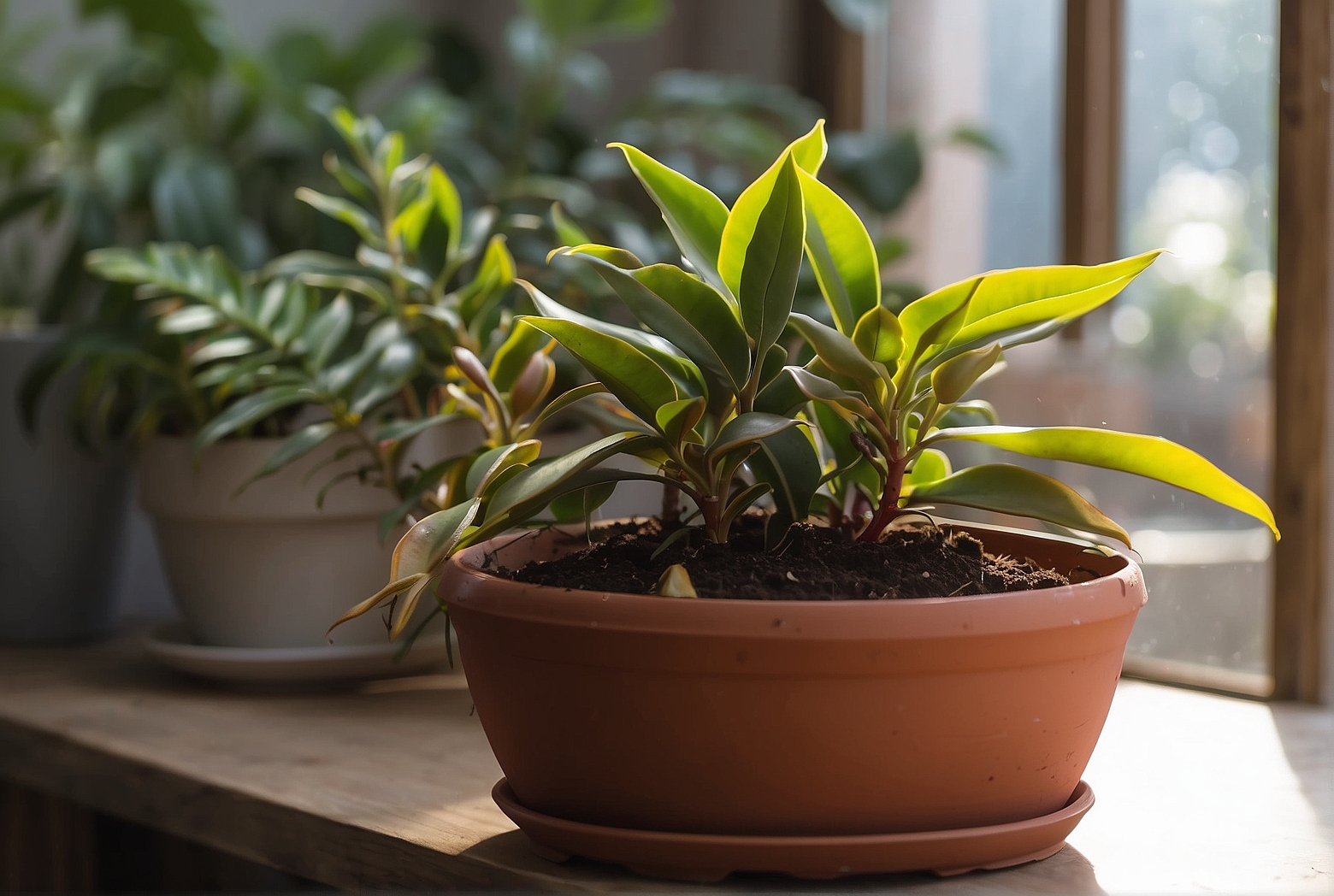Last Updated on April 12, 2024 by Tony Manhart
Have you recently noticed your ZZ plant starting to turn brown? Don’t worry, you’re not alone. Many plant enthusiasts encounter this issue and wonder why it happens. In this article, we will explore the reasons behind the browning of ZZ plants, providing you with insights into its care and necessary steps to revive its lush green appearance. Get ready to uncover the secrets to keeping your ZZ plant thriving and vibrant!
Insufficient Watering
Underwatering
Underwatering is one of the most common reasons why your ZZ plant may be turning brown. If the soil of your ZZ plant feels dry to the touch, it is an indication that your plant is not receiving enough water. When a ZZ plant doesn’t get sufficient water, its leaves will start to droop and turn brown, especially at the tips or edges. To prevent your plant from underwatering, make sure to monitor the moisture level of the soil consistently and water your plant thoroughly when the top inch of soil appears dry.
Overwatering
On the other hand, overwatering can also cause your ZZ plant’s leaves to turn brown. When the roots of your ZZ plant are constantly submerged in water, they can become waterlogged, leading to root rot. As a result, the leaves of your plant will start to turn brown and become mushy. To prevent overwatering, ensure that your ZZ plant is placed in a pot with drainage holes. Additionally, allow the soil to dry out slightly between waterings to avoid waterlogged conditions.
Improper Lighting
Insufficient Light
Insufficient light can be another reason behind your ZZ plant’s brown leaves. ZZ plants thrive in bright, indirect light, and if they don’t receive enough light, their leaves may start to turn brown or yellow. If your ZZ plant is placed in a location with insufficient light, consider moving it to a spot where it can receive more indirect sunlight. However, be cautious not to expose it directly to harsh sunlight, as this can cause sunburn and further damage the leaves.

Direct Sunlight
While ZZ plants prefer bright, indirect light, direct sunlight can also be detrimental to their health. Exposing your ZZ plant to direct sunlight can cause its leaves to burn or develop brown spots. Therefore, it is important to strike a balance between providing enough light and avoiding direct sunlight. If your ZZ plant is currently in a location with direct sunshine, consider moving it to a spot where it can receive filtered or indirect light.
Inadequate Humidity
Dry Air Conditions
If the air in your home or office is particularly dry, it can lead to inadequate humidity for your ZZ plant. Low humidity levels can cause the tips of your ZZ plant’s leaves to turn brown and become crispy. To increase humidity around your ZZ plant, you can place a humidity tray filled with water near the plant or use a humidifier in the room. Misting the leaves of your ZZ plant occasionally can also help to provide some moisture.
Low Humidity Environment
In some environments, such as air-conditioned spaces or areas with central heating, the humidity levels can be consistently low. This low humidity can negatively impact your ZZ plant, causing its leaves to turn brown. To address this issue, you can group your plants together to create a microclimate with slightly higher humidity. Another effective solution is to use a room humidifier to increase the overall humidity in the area where your ZZ plant is located.
Lack of Proper Drainage
Poor Quality Soil
If your ZZ plant is potted in poor quality soil that does not provide adequate drainage, it can lead to waterlogged conditions and cause the plant’s roots to rot. When the roots are damaged, the leaves of the ZZ plant will turn brown and droop. To ensure proper drainage, it is recommended to use a well-draining soil mix specifically designed for houseplants. This type of soil will allow excess water to escape and prevent the roots from becoming overly saturated.

Improper Drainage System
Apart from the soil quality, the drainage system of your ZZ plant’s pot also plays a crucial role in preventing the leaves from turning brown. If your pot does not have drainage holes, excess water cannot escape, leading to water accumulation and root rot. It is essential to use pots with drainage holes to allow the excess water to flow out freely. If you are using decorative pots without drainage holes, consider using a plastic or nursery pot inside the decorative one to ensure proper drainage.
Overfeeding or Nutrient Deficiency
Excessive Fertilizer
Overfeeding your ZZ plant with fertilizer can have detrimental effects, causing the leaf tips or edges to turn brown. ZZ plants are known to be tolerant of low-nutrient conditions, and excessive fertilizer can lead to a salt buildup in the soil. This salt buildup can harm the roots and prevent the plant from absorbing the necessary nutrients, resulting in brown leaves. It is best to follow the recommended dosage and frequency of fertilization for your ZZ plant to avoid overfeeding.
Lack of Essential Nutrients
Conversely, a nutrient deficiency can also cause your ZZ plant’s leaves to turn brown. If your plant lacks essential nutrients, it may not be able to carry out its normal functions, leading to discoloration and browning of the leaves. To ensure your ZZ plant receives an adequate supply of nutrients, use a well-balanced fertilizer specifically formulated for houseplants. Following the fertilizer instructions and providing regular feeding will help prevent nutrient deficiencies and maintain the health of your ZZ plant’s foliage.
Extreme Temperatures
Extreme Cold
ZZ plants are native to tropical regions and are sensitive to cold temperatures. Exposure to extremely cold temperatures can severely damage your ZZ plant, causing the leaves to turn brown or even die off. To protect your plant from extreme cold, avoid placing it near drafty windows or doors during the winter months. If the temperature drops below 55°F (13°C), consider moving your ZZ plant to a warmer location or providing additional heat sources, such as a space heater or heat pad.
Extreme Heat
While ZZ plants can tolerate a range of temperatures, extreme heat can also pose a threat to their well-being. When subjected to high temperatures above 90°F (32°C) or exposed to direct heat sources like heating vents or radiators, the leaves of your ZZ plant may become scorched and turn brown. To protect your plant from extreme heat, ensure it is placed in a well-ventilated area away from direct heat sources. Providing shade or using curtains to filter out excessive sunlight can also help maintain an optimal temperature for your ZZ plant.
Pests and Diseases
Spider Mites
Spider mites are a common pest that can infest your ZZ plant and cause its leaves to turn brown. These tiny pests thrive in dry conditions and can multiply quickly. Spider mites feed on the sap of the plant, causing the leaves to become discolored and develop brown or yellow spots. To eliminate spider mites, regularly inspect your ZZ plant for any signs of infestation and treat it with appropriate insecticidal soap or neem oil. Increasing humidity levels can also help deter spider mites.
Fungal Infections
Fungal infections can also contribute to the browning of your ZZ plant’s leaves. Too much moisture, improper drainage, or high humidity can create a favorable environment for fungal growth. Fungal infections often manifest as dark brown spots or patches on the leaves. To prevent fungal infections, ensure proper drainage, avoid overwatering, and water your plant at the base, avoiding wetting the leaves. If your ZZ plant is already affected by a fungal infection, remove and destroy the infected parts or consider using a suitable fungicide.
Root Rot
One of the consequences of overwatering or poor drainage is root rot, which can lead to browning of your ZZ plant’s leaves. When the roots are constantly submerged in water or have inadequate airflow, they can become infected with root rot-causing fungi. As the roots deteriorate, the plant’s ability to take up water and nutrients is compromised, resulting in brown and wilting leaves. To prevent root rot, ensure your ZZ plant is potted in well-draining soil and allow the soil to dry out between waterings.
Natural Aging Process
Older Leaves Turning Brown
The natural aging process of ZZ plants involves the gradual browning of older leaves over time. As your plant grows and produces new leaves, the older leaves at the bottom of the plant will naturally turn brown and eventually die off. This is a normal occurrence and does not necessarily indicate any underlying issues with your ZZ plant’s health. You can simply trim off the brown leaves to maintain the plant’s aesthetic appearance.
Physical Damage
Accidental Breakage
Accidents happen, and sometimes your ZZ plant may experience physical damage, such as broken or bruised leaves. When a leaf is damaged, it can turn brown and wither. To prevent accidental breakage, be mindful of the location of your ZZ plant and avoid placing it in high-traffic areas or where it can easily be knocked over. If a leaf is damaged, you can prune it off using clean scissors or shears to promote new growth.
Harsh Handling
ZZ plants have delicate leaves that can be sensitive to rough handling. Handling the leaves roughly or brushing them against sharp objects can cause browning and bruising. It is important to handle your ZZ plant with care and avoid unnecessary contact with the leaves. When moving or repositioning your plant, always hold the base or pot instead of grasping the leaves. By being gentle with your ZZ plant, you can minimize the risk of physical damage and maintain its healthy appearance.
Incompatible Plant Partners
Chemical Interactions
Some plants may produce natural chemical compounds that can be harmful to other plant species, including ZZ plants. Placing incompatible plant partners in close proximity can result in chemical interactions that may cause brown spots or browning of the leaves. To prevent chemical damage, choose plant companions that have similar care requirements and are known to grow well together. Researching and selecting suitable plant combinations can help maintain the health and appearance of your ZZ plant.
Competing for Resources
Incompatible plant partners can also result in competition for resources such as light, water, and nutrients. If your ZZ plant is crowded by other plants or overgrown companions, it may not receive adequate resources, leading to brown leaves or stunted growth. To avoid resource competition, ensure sufficient space between your ZZ plant and its companions. Regularly assess the growth and health of nearby plants, and if necessary, consider transplanting or rearranging them to provide optimal conditions for each plant.
In summary, there are various reasons why your ZZ plant may be turning brown. Insufficient watering, improper lighting, inadequate humidity, lack of proper drainage, overfeeding or nutrient deficiency, extreme temperatures, pests and diseases, natural aging process, physical damage, and incompatible plant partners can all contribute to the browning of your ZZ plant’s leaves. By understanding the causes and taking appropriate actions, you can help your ZZ plant regain its health and vitality, ensuring its leaves remain beautiful and green. Remember to observe and care for your ZZ plant attentively, providing it with the environment and conditions it needs to thrive.
Tony Manhart is a passionate gardener who has been tending to gardens for over 20 years. He takes pride in creating beautiful outdoor spaces with plants, trees, and shrubs that can thrive in any environment. He loves to share his knowledge with others and has taught classes on gardening basics and advanced techniques. He is committed to sustainability, using natural and organic methods to create and maintain gardens. He also works with local organizations to create green spaces for communities. When he’s not gardening, Tony enjoys hiking, reading, and spending time with his family.


